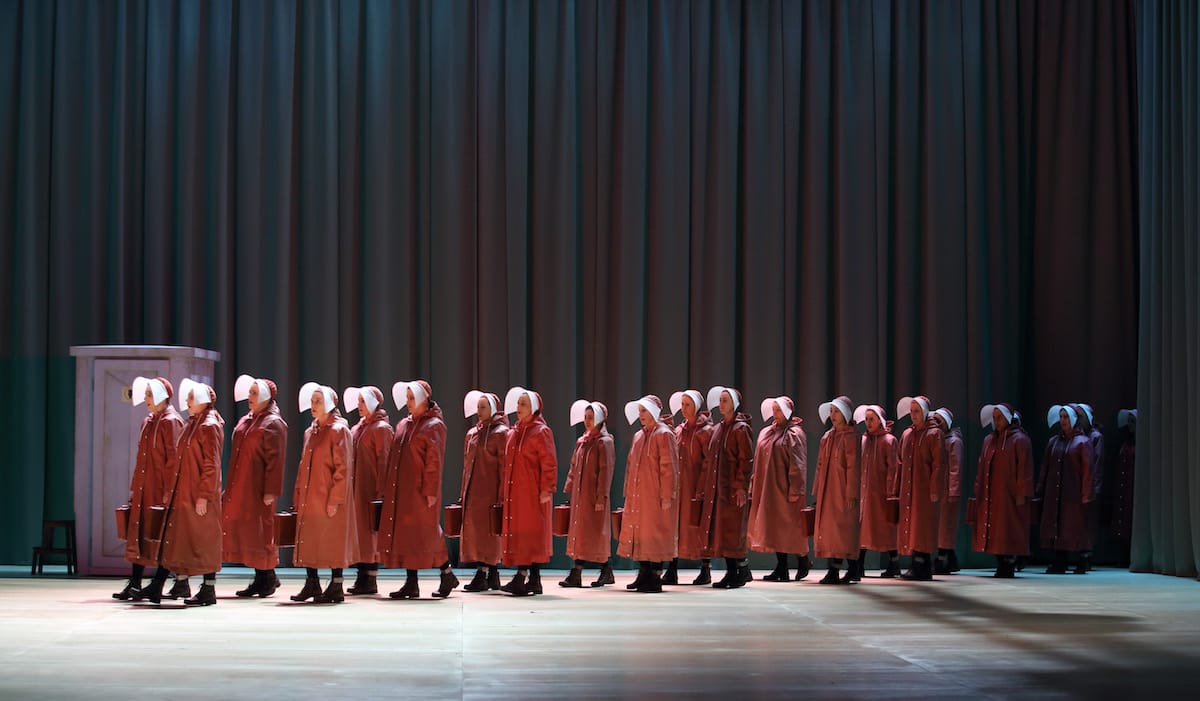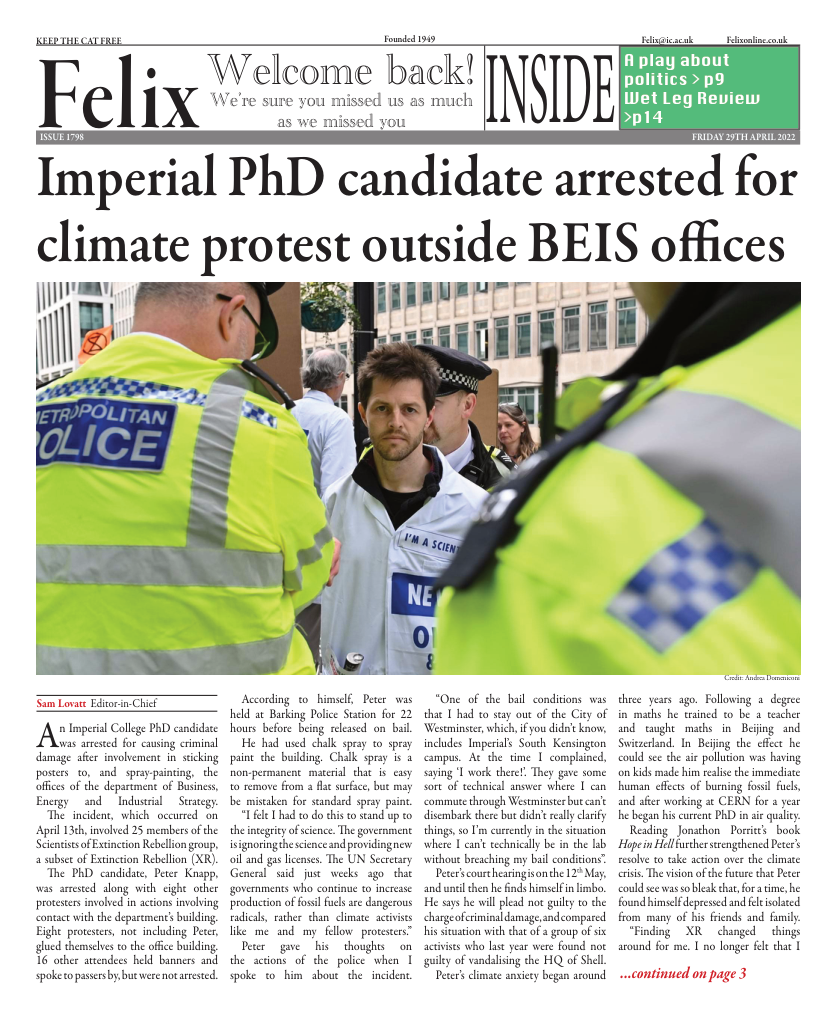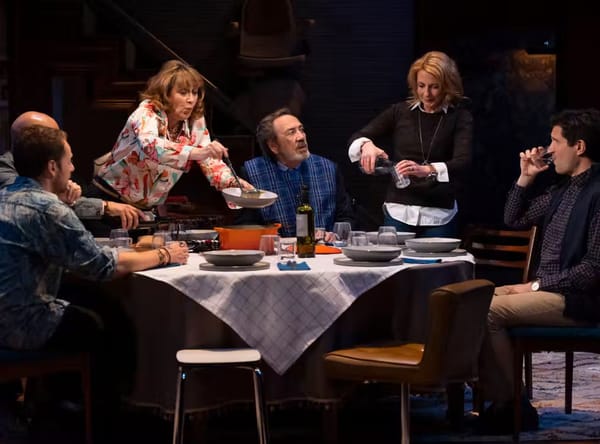The Handmaid's Tale Review
As the audience enter the London Coliseum, the handmaids’ red jackets, symbols of their oppression, dangle on stage inhabited as if being worn by invisible figures.

The Handmaid's Tale
★★★
- What: Drama
- Where: London Coliseum
- When: Until 14th April
- Cost: Free (for under 21s)
As the audience enter the London Coliseum, the handmaids’ red jackets, symbols of their oppression, dangle on stage inhabited as if being worn by invisible figures. It is both a fitting and haunting image that aptly summarises the concrete vision of artistic director of the ENO Annilese Miskimmon’s directorial debut: to shine a light on unheard voices.
The Handmaid’s Tale traces the inner life of a women living under the dystopian theocracy of Gilead where fertile women are forced to be handmaids who are ceremonially raped in a quasi-biblical ceremony. With the Amazon TV series adaption of the original novel, and Atwood’s sequel releasing in 2019, The Handmaid’s Tale has as ingrained itself within popular culture. The now iconic red cloaks are even frequently donned at women’s rights protests across the globe. But what can a new production of the opera adaption add to the conversation?
Unlike the TV series, where every nook and cranny of Gilead is brought eerily to life, here the world of The Handmaid’s Tale is left to the audiences’ imagination with a simplistic set; a green clinical coloured curtain borders the stage with a pink curtain descending to mark the house where Offred is assigned to be used as a handmaid. Instead, the production focuses on Offred’s inner turmoil which fully inhabits the space.
Poul Ruder’s raw minimalist score maps each of Offred’s emotional triumphs and obstacles. Conductor Joana Carneiro draws the grounded and muddy elements out of the music; trumpets spatter, spit, and growl at Offred as if they are the oppressive regime oppressing her. There is no hope of relief from the sweet hum of a string instrument other than the hymn Amazing Grace that is here demonically inverted, playing over each ritualistic rape scene.
Kate Lindsey’s Offred’s voice is stern but agile. Her intense longing for freedom forges a clear sense of hope and she deftly navigates Paul Bentley’s winding Libretto. Trying to cram so much narrative background into a just over two-hour opera means that some of the story is be rushed. Those who are not familiar with the novel might become lost in the dense world. But creative directorial decisions make the story easily digestible; memories of Offred’s real family from the “time before” Gilead are particularly haunting, projected onto stage with a grainy black and white film.
Avery Amereau is a fiery Serena Joy, the wife of Offred’s commander who rapes Offred ceremoniously. For such a cruel character, Amereau weaves a deal amount of sympathy into her portrayal, her jealously sparked from deep-seated insecurity that Amereau slowly unravels.
The opera is probably not a must see for fans of Atwood’s dystopia. But in the context of the opera world, it is essential. Given that many canonical works in the repertoire are mired by a
legacy of misogyny, The Handmaid’s Tale stands out as a bold, unabashedly feminist opera that puts a woman centre stage to explore female issues rarely explored in opera.








